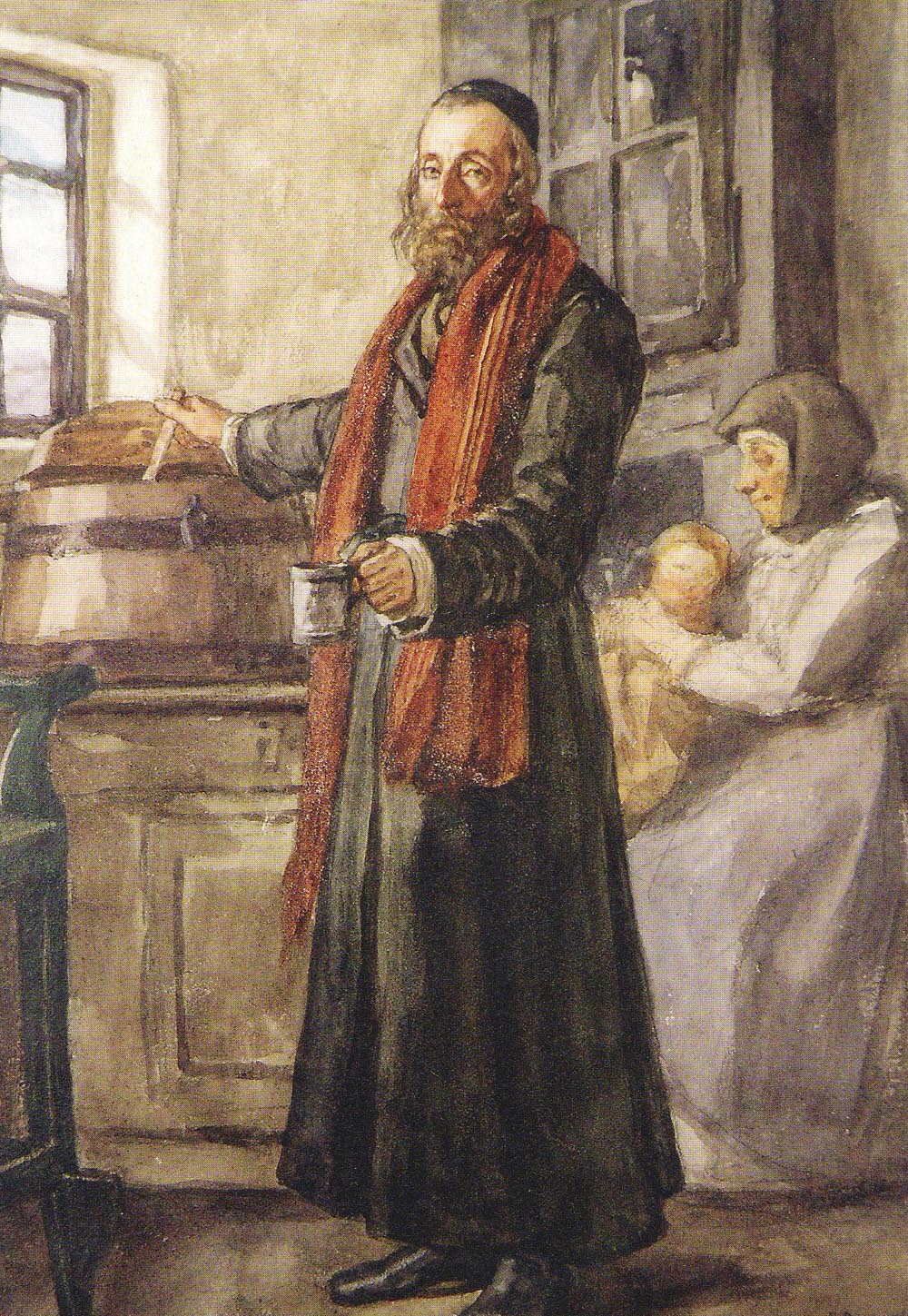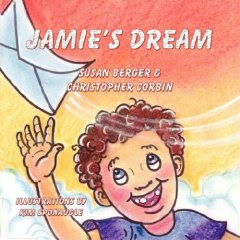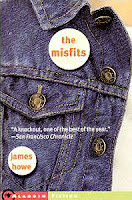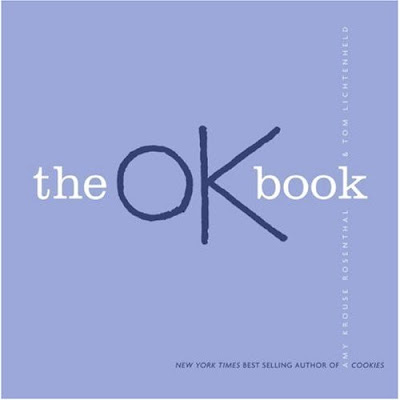new posts in all blogs
Viewing: Blog Posts Tagged with: liquor, Most Recent at Top [Help]
Results 1 - 8 of 8
How to use this Page
You are viewing the most recent posts tagged with the words: liquor in the JacketFlap blog reader. What is a tag? Think of a tag as a keyword or category label. Tags can both help you find posts on JacketFlap.com as well as provide an easy way for you to "remember" and classify posts for later recall. Try adding a tag yourself by clicking "Add a tag" below a post's header. Scroll down through the list of Recent Posts in the left column and click on a post title that sounds interesting. You can view all posts from a specific blog by clicking the Blog name in the right column, or you can click a 'More Posts from this Blog' link in any individual post.

By: Alice,
on 4/14/2014
Blog:
OUPblog
(
Login to Add to MyJacketFlap)
JacketFlap tags:
Books,
Religion,
jews,
jewish,
liquor,
passover,
Humanities,
*Featured,
chametz,
glenn dynner,
Kingdom of Poland,
tavernkeeping,
yankel's tavern,
tavernkeepers,
leavened,
papierze,
“karczmarz,
jasio,
akwarela,
Add a tag
By Glenn Dynner
Today, observant Jews the world over are selling off their leavened foodstuffs (chametz) in preparation for the Passover holiday, which begins with a seder this evening and is followed by eight days of eating matzah, macaroons, and other unleavened products.
But in Eastern Europe, where the vast majority of American Jews have roots, the sale of leavened products not only used to be more widespread, it was more complicated. Many East European Jews—almost 40%—made their living selling beer, wine, and rye-based vodka in taverns leased from the Polish nobility. Passover was a forced holiday for them.

Henryk Rodakowski, “Karczmarz Jasio,” z cyklu Album Pałahickie, 1867, akwarela na papierze, 32 x 23 cm.
During the eight days of Passover, Jewish tavernkeepers had to “sell” all of their leavened products to non-Jewish neighbors. Rabbis drew up contracts for the fictitious sales similar to those utilized today, a loophole meant to prevent economic ruin.
Problems emerged in the early nineteenth century, when the government attempted to drive Jews out of rural tavernkeeping (ostensibly to protect the peasants from drunkenness and ruin) by imposing heavy concession fees on them. The Hasidic master Moses Eliyakim Beriyah of Kozienice lamented that “several of the [Jewish] villagers were forced to apostatize because of their need to make a living.”
The main issue for the numerous traveling Jewish merchants, who relied on Jewish-run taverns for hospitality, was not that those proprietors had converted to Christianity. It was that, according to Jewish law, the proprietors were technically still Jewish. Yet who could be sure that they were “selling off” their leaven products to gentiles during the intermediate days of Passover? This cast doubt on the ritual fitness of everything they sold. A governmental investigation, preserved in Polish archival records, confirms that most Jewish customers refused to purchase liquor from apostate tavernkeepers on these grounds.
Thus, conversion to Christianity did not turn out to be much of a solution for Jewish tavernkeepers struggling under the weight of discriminatory legislation. Instead, many began to evade concession fees by going underground—permanently installing Christians as “fronts” for their taverns. They did this with the full knowledge and participation of their Christian neighbors, a beautiful reflection of Jewish-Christian coexistence at the local level during the rise of absolutism!
Glenn Dynner is Professor of Jewish Studies at Sarah Lawrence College and the author of Yankel’s Tavern: Jews, Liquor, and Life in the Kingdom of Poland. He has been a Fellow at the Katz Center for Advanced Judaic Studies at the University of Pennsylvania, a member of the Institute for Advanced Study at Princeton University, and is currently the NEH Senior Scholar at the Center for Jewish History in New York.
Subscribe to the OUPblog via email or RSS.
Subscribe to only religion articles on the OUPblog via email or RSS.
The post Passover in Jewish Eastern Europe appeared first on OUPblog.


By: Lauren,
on 4/6/2011
Blog:
OUPblog
(
Login to Add to MyJacketFlap)
JacketFlap tags:
Oxford Etymologist,
Dictionaries,
alcohol,
liquor,
word origins,
oed,
oxford english dictionary,
Food & Drink,
anatoly liberman,
booze,
word history,
*Featured,
Lexicography & Language,
james murray,
history of booze,
bouse,
Add a tag
By Anatoly Liberman
Booze is an enigmatic word, but not the way ale, beer and mead are. Those emerged centuries ago, and it does not come as a surprise that we have doubts about their ultimate origin. The noun booze is different: it does not seem to predate the beginning or the 18th century, with the verb booze “to tipple, guzzle” making its way into a written text as early as 1300 (which means that it turned up in everyday speech some time earlier). The riddles connected with booze are two.
First, why did the noun appear so much later than the verb? A parallel case will elucidate the problem. The verb meet is ancient, while the noun meet is recent, and we can immediately see the reason for the delay: sports journalists needed a word for a “meeting” of athletes and teams and coined a meet, whose popularity infuriated some lovers of English, but, once the purists died out, the word became commonplace (this is how language changes: if a novelty succeeds in surviving its critics, it stays and makes the impression of having been around forever). But the noun booze is not a technical term and should not have waited four hundred years before it joined the vocabulary. Second, the verb booze is a doublet of bouse (it rhymes with carouse, which is fair). Strangely, bouse has all but disappeared, and booze (sorry for a miserable pun) is on everybody’s lips. However, it is not so much the death of bouse that should bother us as the difference in vowels. The vowel we have in cow or round was once “long u” (as in today’s coo). Therefore, bouse has the pronunciation one expects, whereas booze looks Middle English. In the northern dialects of English “long u” did not become a diphthong, and this is probably why uncouth still rhymes with youth instead of south. Is booze a northern doublet of bouse? One can sense Murray’s frustration with this hypothesis. He wrote: “Perhaps really a dialectal form” (and cited a similar Scots word). It is the most uncharacteristic insertion of really that gives away Murray’s dismay. His style, while composing entries, was business-like and crisp; contrary to most people around us, he preferred not to strew his explanations with really, actually, definitely, certainly, and other fluffy adverbs: he was a scholar, not a preacher.
Whatever the causes of the modern pronunciation of booze, one etymology will cover both it and bouse. So what is the origin of bouse? This word is surrounded by numerous nouns and verbs, some of which must be and others may be related to it. First of all, its Dutch and German synonyms buizen and bausen spring to mind. Both are rare to the extent of not being known to most native speakers, but their use in the past has been recorded beyond any doubt. Most other words refer to swelling, violent or erratic movement, and noise: for instance, Dutch buisen “strike, knock” and, on the other hand, beuzelen “dawdle, trifle,” Norwegian baus “arrogant; irascible” and bause “put on airs” (which partly explains the sense of Dutch boos and Germa

By: Lauren,
on 10/6/2010
Blog:
OUPblog
(
Login to Add to MyJacketFlap)
JacketFlap tags:
A-Featured,
Oxford Etymologist,
Lexicography,
alcohol,
liquor,
word origins,
etymology,
anatoly liberman,
booze,
drinking,
rum,
Add a tag
By Anatoly Liberman
The idea of this post, as of several others before it, has been suggested by a query from a correspondent. A detailed answer would have exceeded the space permitted for the entire set of monthly gleanings, so here comes an essay on the word rum, written on the first rather than the last Wednesday of October. But before I get to the point, I would like to make a remark on the amnesia that afflicts students of word origins. Etymology is perhaps the only completely anonymous branch of linguistics. When people look up a word, they hardly ever ask who reconstructed its history. Surround seems to be related to round, but it is not. On the other hand, soot does not make us think of sit; yet the two are allied. Obviously, neither conclusion is trivial. Even specialists rarely know the names of the discoverers (for those are hard to trace). Unlike Ohm’s Law or Newton’s laws, etymological knowledge easily becomes faceless common property, a plateau without a single hill to obstruct the view. To be sure, we have great authorities, such as the OED and Skeat, but Murray, Bradley (the OED’s first great editors) and Skeat authored only some of the statements they made. In many cases they depended on the findings of their predecessors. What then was their input? All is either forgotten or falsely ascribed to them. Murray could defend his authorship very well. Skeat, too, in countless letters to the editor, strove (strived: take your pick) for recognition and kept rubbing in the fact that he, rather than somebody else, had elucidated the derivation of this or that word. Rarely, very rarely do dictionaries celebrate individual discovery. Thus, pedigree (which French “lent” to English) means “foot of a crane,” from a three-line mark, like the broad arrow used in denoting succession in pedigrees. This was explained by C. Sweet (no relative of Henry Sweet, the famous philologist and the prototype of Dr. Higgins; I could not find any information on him), and Skeat gave the exact reference to his publication. Something similar, though less spectacular (because the conclusion is still debatable), happened when language historians began to research the history of the noun rum.
The most universal law of etymology is that we cannot explain the origin of a word unless we have a reasonably good idea of what the thing designated by the word means. For quite some time people pointed to India as the land in which rum was first consumed and did not realize that in other European languages rum was a borrowing from English. The misleading French spelling rhum suggested a connection with Greek rheum “stream, flow” (as in rheumatism). According to other old conjectures, rum is derived from aroma or saccharum. India led researchers to Sanskrit roma “water” as the word’s etymon, and this is what many otherwise solid 19th-century dictionaries said. Webster gave the vague, even meaningless reference “American,” but on the whole, the choice appeared to be between East and West Indies. Skeat, in the first edition of his dictionary (1882), suggested Malayan origins (from beram “alcoholic drink,” with the loss of the first syllable) and used his habitual eloquence to boost this hypothesis.
Then The Academy, a periodical that enjoyed well-deserved popularity throughout the forty years of its existence (1869-1910), published the following paragraph. (The Imperial Dictionary [not A Universal Dictionary of the English Language, as Spitzer says] gives it in full, but I suspe
I know I'm going to sound like a curmudgeon, but at the risk of it, I'll tell you what's on my mind. I'm not sure why we need to have a Valentine's Day. Say, what? Yes, you read this correctly.
While it's sweet and all that we have one day dedicated to acknowledge the love we have for the special person in our life, and vice versa, for some reason, it just seems so lame to me. The fact we need

By:
Mayra Calvani,
on 2/13/2008
Blog:
Mayra's Secret Bookcase
(
Login to Add to MyJacketFlap)
JacketFlap tags:
guardian angel publishing,
susan berger,
self confidence,
jamie's dream,
christopher corbin,
self esteem,
dreams,
guardian angel publishing,
self esteem,
susan berger,
self confidence,
jamie's dream,
christopher corbin,
Add a tag
 Susan Berger is the author of Jamie's Dream, a children's picture book she collaborated with her son, Christopher Corbin.
Susan Berger is the author of Jamie's Dream, a children's picture book she collaborated with her son, Christopher Corbin.
Did you always want to be a writer?
No. I wanted to be a ballet dancer. Then I wanted to be a nurse. (I was reading the Cherry Ames, Girl Nurse Series) Then I wanted to be a reporter. (I was reading the Beverly Gray, Girl Reporter series.) In my defense, I did not want to be everything I read. I never wanted to be an inventor (Tom Swift Series) or a detective (Nancy Drew and The Hardy Boys) In my daydreams I wanted to be queen of the world so I could end all hunger and give all the orphans good homes. Then I wanted to be an actress.
By this time, I was twelve and knew myself for a fickle person since I wanted to be so many things.
I did not want to be a writer. I knew I was a writer. I won my first writing prize at St Cyprians School in Cape Town, S. Africa in 1955. It was a very nice story about the Easter Bunny and Santa Claus. It began... "Far away in the land of Holidays, where no mortal child has ever been, lived the Easter Bunny...." I wish I could remember the rest of it.

In 8th grade, in Westport Connecticut, I had a poem published in anthology of high school poetry. I suppose I wrote some more after that, but it must have been schoolwork. By the time I was in 9th grade, all my extracurricular activity was acting.
When I started to write again in 1992, the first story I worked on was Jamie's Dream with my son Christopher.
Tell us about your recent release. What was your inspiration for it?
I was attending the 1992 Pacific Northwest Writers Conference. They gave out an exercise. "Write about a saying as if it were real" i.e. 'There is a skeleton in my closet.' I chose "Buy a Dream". I came home and discussed it with Christopher. I asked him "Where would you go to buy a dream?" He gave me that LOOK that children give grownups when grownups are being particularly stupid. "Dream's R Us, of course" he answered. And so our collaboration began. Chris was 9, but he was going to a school where writing was highly valued. His school mornings began with 20 minutes of creative writing. Then they read their work aloud. They critiqued each other, just as they did in my adult writer's group. He was a great partner. Over the next 12 years, Jamie was sent out many times. It was rewritten at least 16 times. Then Guardian Angel said they wanted to publish it. The joy of that moment is equaled only by the moment I first saw Kim's Illustrations.
What are you working on now?
This week I worked on Disasters Happen: Earthquake which will be published by Guardian Angel in 2008. It is a non fiction book for the science series. It is aimed at first - third graders. (What causes earthquakes? Can we predict them? Where do they happen? How do we prepare for them? What to do during a quake? What happens afterwards.)
I am also working on a storybook called Brittany's Wall, (Needs a better title.) and a mid grade chapter book called Tasha the Magnificent. Brittany is going into its 8th rewrite. Tasha is going into its 9th rewrite. I have contacted the SCBWI for a new critique group for Tasha. I find re writing to be both drudgery and magic. When I finish a story, I am always convinced that I have written the best story I am capable of writing. It is amazing to see how much better it can become.
What is the best writing advice you have ever received?
It is not your business to question your talent. It is your business to show up at the page. (okay, it's short, but it's great advice.)
Do you have a website or blog where readers may learn more about you and your works?
http://jamiesdream.com/ links to my live journal and to mine and Christopher's IMDB.com pages. I am looking forward to making another website where I can list other books as they come out and link to other authors.
What is the IMDB?
It is the internet movie data base (http://imdb.com/) It is a wonderful site. You can look up any movie or TV show and see the full cast and credits. You can also look up any actor and (hopefully) see what movies and TV shows they have done. I say hopefully because I cannot seem to get my Hannah Montana Episode added. I don't have a large Movie and TV resume. Most of my professional work is theatre.
Is there anything else you'd like to say to our readers?
Andrea says to Melina in The Magic Violin, "I'll tell you what's magic-believing in yourself. That's magic!" Jamie says in Jamie's Dream "But mom, you said I could do anything I believed I could do." I think Andrea and Jamie's mom give very good advice. May you always find the magic.
--Interview by Mayra Calvani
 Did you know that this week is No Name-Calling Week? I found out about this special week from Little Willow.
Did you know that this week is No Name-Calling Week? I found out about this special week from Little Willow.
No Name-Calling Week was inspired by a book, THE MISFITS by James Howe. According to the No Name-Calling Week website, this project "seeks to focus national attention on the problem of name-calling in schools, and to provide students and educators with the tools and inspiration to launch an on-going dialogue about ways to eliminate name-calling in their communities."
The website provides lesson plans for elementary school age and middle school age children, as well as tips for planning an outreach program in the schools. These are great materials to have handy throughout the school year to teach children about bullying.
If you're interested in some book suggestions for your teens, you've got to check out Little Willow's Tough Issues for Teens Booklist. It is simply impressive.
And if you want some solid non-fiction reads to help your elementary age to high school age child deal with cliques and bullying, you'll want to go here and here.
.jpg?picon=380)
By:
Just One More Book!!,
on 7/28/2007
Blog:
Just One More Book Children's Book Podcast
(
Login to Add to MyJacketFlap)
JacketFlap tags:
review,
Podcast,
Community,
Ages 4-8,
Detailed,
Compassion,
Courage,
Creativity,
Forgiveness,
Respect,
Picture book,
Bullying,
Girl,
Resilience,
childrens book,
Life Skills,
Spirituality,
Rhyming,
Assertiveness,
Confidence,
Harmony,
Understanding/Tolerance,
Communication,
self esteem,
Cassandras Angel,
Gina Otto,
Trudy Joost,
Add a tag
 Author: Gina Otto
Author: Gina Otto
Illustrator: Trudy Joost
Published: 2001 Illumination Arts (on JOMB)
ISBN: 0935699201 Chapters.ca Amazon.com
Surreal illustrations and rhyming text invite us to rise above the judgements of others and stay true to our authentic selves.
Tags:
Cassandras Angel,
childrens book,
Gina Otto,
Podcast,
review,
self esteem,
Trudy JoostCassandras Angel,
childrens book,
Gina Otto,
Podcast,
review,
self esteem,
Trudy Joost
 by Amy Krause Rosenthal &
by Amy Krause Rosenthal &
Tom Lichtenfeld
Kook Productions/
HarperCollins 2007
1970's pop psychology took this long to filter down into picture books?
The letters OK are tilted to one side to represent a child who introduces us to all the things they are "okay" at. Despite making mistakes within the illustrations the text confidently declares that they are still okay:
An okay pancake flipper (though it lands on its head);
An okay kite flyer (while it's stuck in a tree);
An okay swimmer (sticking a cautious toe in the water at the edge of the shore);
"One day, I'll grow up and be really excellent at something...
...but I sure am having fun figuring it out."
It's difficult to take a self-esteem book to task for its earnestness, but a part of me feels that learning these sorts of lessons from books -- rather than through more effective approaches like parenting and example -- removes a certain layer of responsibility. It provides adults a false sense of fulfilled obligation, that by introducing the concept of being "okay for the time being" through a book absolves those adults from further interaction or reinforcement. Perhaps as a preschool tool for introducing children to the topic as a jumping-off point for discussion it's okay, though the repetition of the text could prove tedious.
But perfectly for okay parents who might need the reminders.







 Author:
Author: 
I want her legs! That song makes me cry every time I hear it. Thanks for a reminder that I am important. It made my day.
Amen. Valentine's Day still reminds me of my high school days when the popular girls would get carnations to pin on their blouses.
"If the person doesn't show you in so many ways on a daily basis already, why should a day advertised to be the most romantic day of the year, make it different?""Honor and respect yourself."You're so right. I needed to see that. Thank you.
Here, here. There were many years I hated Valentine's day, both when I was alone and when I wasn't, but fretted about whether the Significant Other was treating me "right." Now I get my boys a big hunk of chocolate, because I want to, and don't fret it.But it was fun doing a book love post at the blog today! So I guess I did just what you say, I made the day mine!
I'm not a huge Valentine Day fan, but I'm not against it either. Now that I'm a grown-up, I like watching my kids enjoy getting their class Valentines and their class party. This year I made my husband promise that we'd keep it very low key - especially given that I'm working until 9:00 tonight.A friend sent along a video that I posted today (must be the day for it) that is very sweet about lots
Valentine's Day always reminds me of the fifties and big old books of valentines to cut or punch out and give to classmates. Somehow it never meant too much for actual sweethearts when I got old enough to have one!Back to the present--you always create powerfully thoughtful prompts to keep us all pluggin' away. Thank you.On a more superficial note, I am not saying I need CA's thighs, mind you,
You're so right.That's a really great song.I don't think we need a Valentine's Day. And I'm not being bitter or anything by saying that (I've got plenty of lurv in my life)! I just don't think you should need a day that dictates telling/showing someone you love them. Like you said.
Wow - I love this holiday :) I get to wear pink and red and there's always so much candy. It's like Halloween but the colors are different.Does this mean I shouldn't send you the Valentine e-greeting?:)I love the advice to do something special for yourself today!
I put V. Day in the same catagory as Halloween. It's all about the candy and the kid's class parties. I could do with out the whole thing but I like seeing them have fun. I did give myself permission to break my Lenten vow and eat chocolate. I felt sick afterwards so I am even more glad I gave up chocolate for Lent.
I think Valentine's Day should be a designated "Catch up on your correspondence" day, since St. Valentine delivered letters. I know I certainly need to write to people with whom I've lost touch. In Valentine's Days past, I'd get myself little presents. You know, just to show I cared.;)xoxo